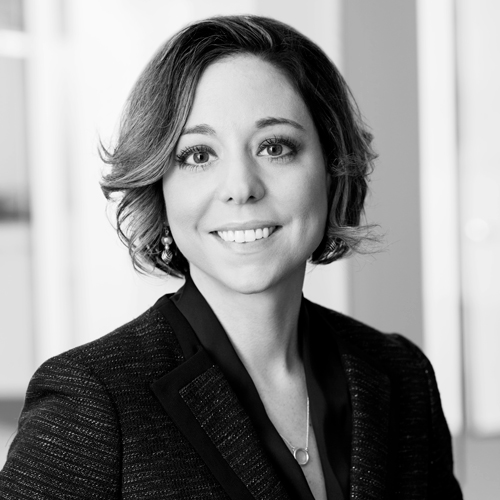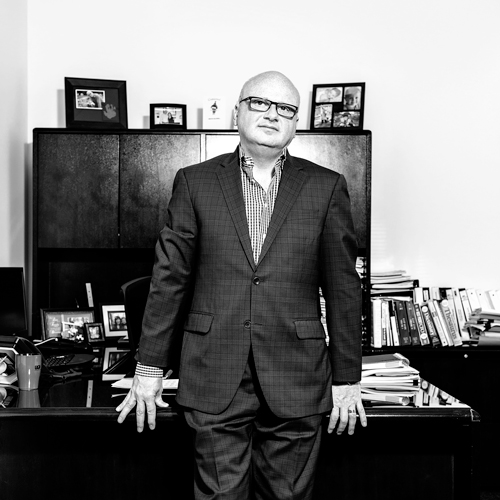With 21,000 employees guided by a primary mission to improve lives through reliable, sustainable energy solutions, AES successfully generates and distributes energy in seventeen countries worldwide. That ambitious undertaking is actualized by Tish Mendoza, senior vice president of global human resources and internal communications, and chief human resources officer. She is refining the company’s talent-development strategies to unite the AES workforce for continuous, purpose-driven results in every market the company serves.

Since joining AES in 2006, Mendoza has spearheaded efforts to change and improve corporate culture, develop internal communications strategies, and create new efficiencies. It’s been a challenging and rewarding task, and one that Mendoza is palpably excited about as she continues on this evolving journey.
“We had just a few people; it was a small global HR team. I was helping to bring harmonization and standardization to global compensation, as well as executive compensation,” Mendoza explains of her role in the HR department. Today, the group has a larger team and a larger scope. AES believes its people are its energy, and the HR team’s challenge is to help AES employees reach their fullest potential at the company.
That challenge hasn’t been easy. In recent years, the energy industry has been going through a sea of change in the way things used to function and the pressures it is facing. The market is more volatile and moving at a faster rate. There’s been a movement to become more independent from coal and oil, and move into renewable energy resources. In 2011, Andrés Gluski became CEO, asking some important questions that began a process of redefining the culture at AES and pushing it toward its current direction, which has resulted in renewed growth and success.
A new strategic vision was put in place for the leading independent energy company: to meet and surpass commitments to its shareholders, to be recognized as a great place to work, and to become a top-tier company in regard to sustainability and corporate responsibility. This gave Mendoza the opportunity and the impetus to address issues AES was facing in its own business culture—particularly in human resources—and integrate it with the company’s long-term goals.
“Let me just give you the flavor. At the time, each business operated autonomously for the most part. We didn’t have a common culture. We knew we needed one measure of our culture and how people work,” Mendoza explains. “We introduced the Denison Model in January 2012 to do just that. The Denison Model is a third-party assessment that links organizational culture and leadership practices to performance metrics. It wasn’t about saying whether our culture was good or bad, it was about seeing if we had what it would take to accomplish our long-term goals. The results we got from that first survey clearly showed us where we were doing things right and where we had opportunities to improve.”
The team then went to work. The aim was to take those opportunities and make them a reality that would strengthen the AES culture and increase its performance. The first step was aligning the organization with the company’s long-term vision and mission. Mendoza explains that the team needed to find ways to be more efficient in the way they worked and the ways in which different groups worked together. It was all about fostering coordination, collaboration, and simplifying processes across the company.
It took time for AES to engage its full global workforce, but the company saw the results of its efforts through a resurvey of the organization in the fall of 2013. The outcome showed significant improvements across the board. “The results speak for themselves as we improved by 50 percent at working toward a common vision, 24 percent at raising performance everywhere, 32 percent at working together, and 40 percent at changing with our markets.”
“It wasn’t about saying whether our culture was good or bad, it was about seeing if we had what it would take to accomplish our long-term goals.”
In analyzing the results, Mendoza recognized that despite how far they had come, the team’s work was not done. “We conducted strategy and culture work sessions, which we called ‘taking it to the next level’ with over 39 percent of our mid-level leaders in each of our four functional areas and in each of our six market-facing SBUs [strategic business units] from March through October 2014,” she says. “The goal of these sessions was to reinforce the direction we’re taking as a company, share our plans to support that strategy within each group, and discuss how we’ll work together to be successful. Each group took the time to brainstorm ways that they can drive our performance even higher and left the meeting with the objective to engage their people to make it happen.”
This was the beginning of the company’s “Spark” annual events—meetings and discussions that now engage people at all levels across the company. “We hold sessions around the world where we talk about our strategies and talk about culture, and we’ve woven this cultural element into how we work our everyday business,” Mendoza says. “We pay a lot of attention to whether our leaders are engaging and living our cultural aspirations, and we spend a lot of time making sure that we’re developing the right people and that they’re developing in the right way, and we’re picking the right leaders and the right places. Culture is always part of the conversation.”
Again, the efforts of Mendoza’s team were met with success. “We’re happy to say that the organization has moved. It has changed, and the success that we’ve had in the last five years gave us the opportunity to continue to move forward,” she says.
Looking ahead, Mendoza has launched a new program aimed at transforming the experience human resources creates for employees at AES. “Our efforts will take our HR performance to the next level by creating one, unified global human resources team with common programs and offerings. We’ve called these efforts HR Performance2,” she explains. “In November, we achieved a major milestone of the HR Performance2 program. Our new human-capital management system, which will serve as the foundation of our efforts, went live. The platform now not only stores all of the data for our 21,000 people in one place for the first time, but also gives us the opportunity to streamline and harmonize our HR processes and services while gaining valuable insight into our global workforce that will ensure we can meet our business’ needs from a people perspective. The results to date have exceeded our goals.”
Changing a company’s culture is no simple task. Yet being clear about the vision and mission has given Mendoza the key to making it happen company-wide at AES. Her personal vision is to make sure that the company’s HR department works like a strategic partner with AES internally, and that human resources is integrated completely with the company’s mission and business objectives. Indeed, Mendoza has sparked new conversations and new ways of looking at the company culture, bringing positive, measurable results. She says, “It’s the unifying of our people around our strategy, our vision, and how we work, which will help us continue to succeed.”

